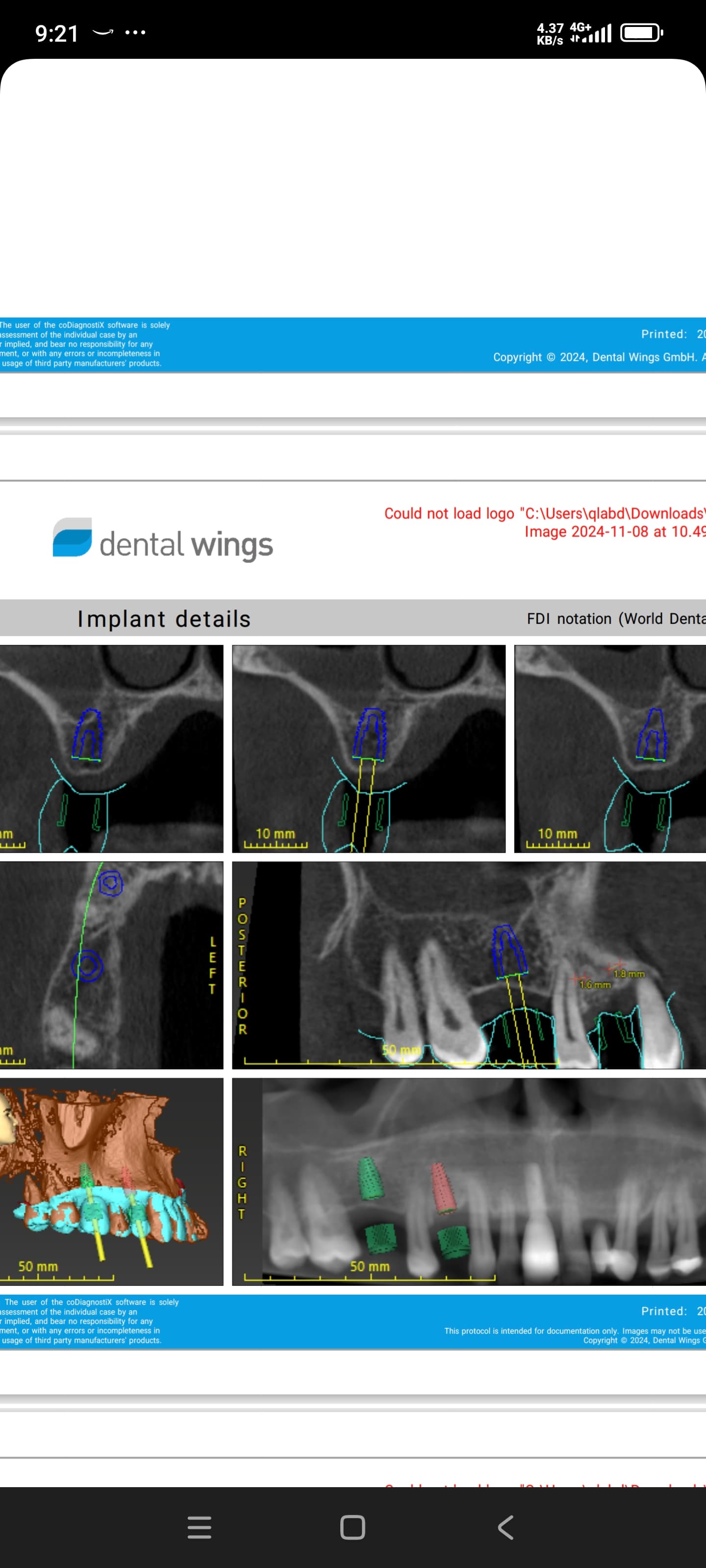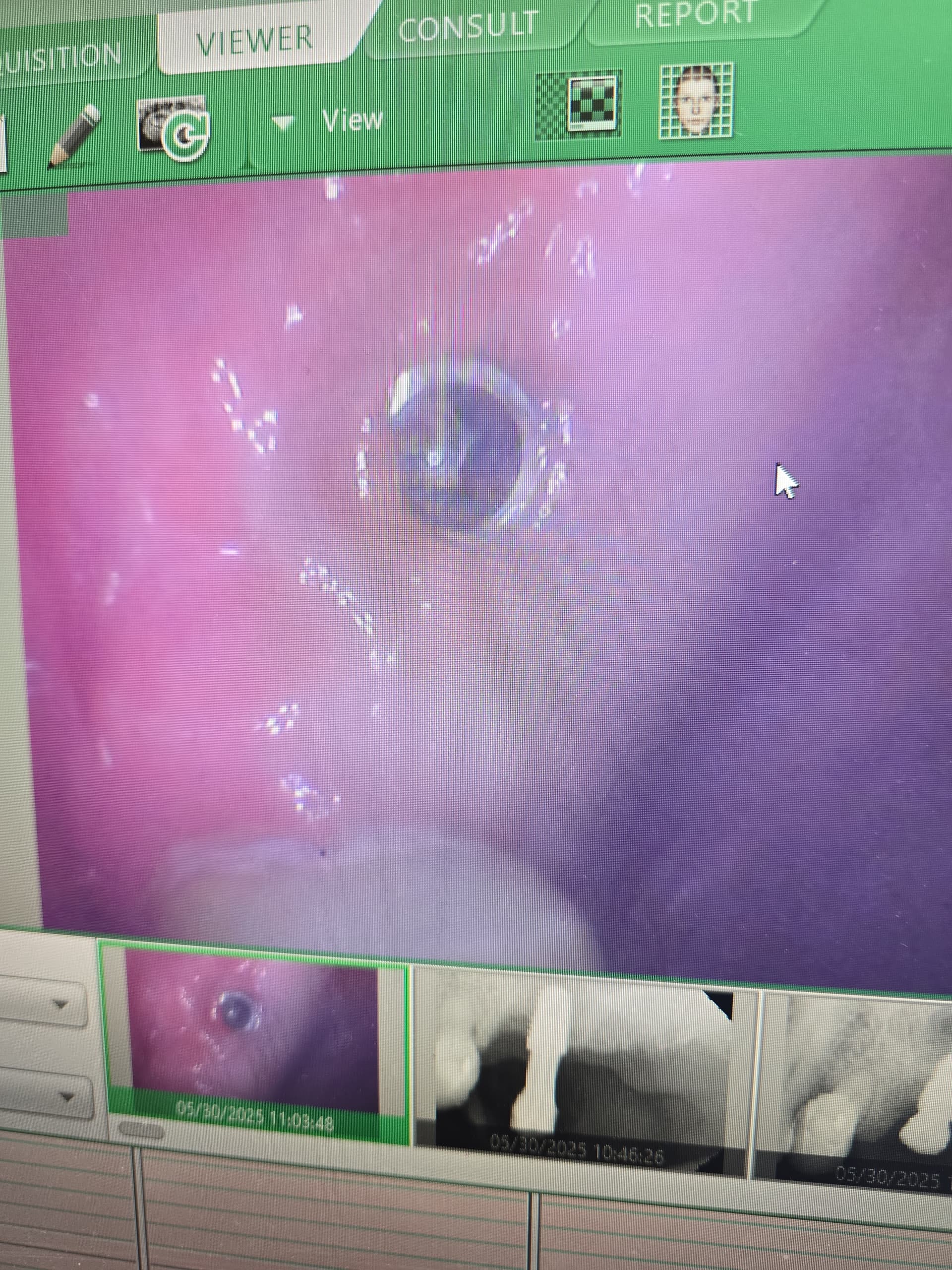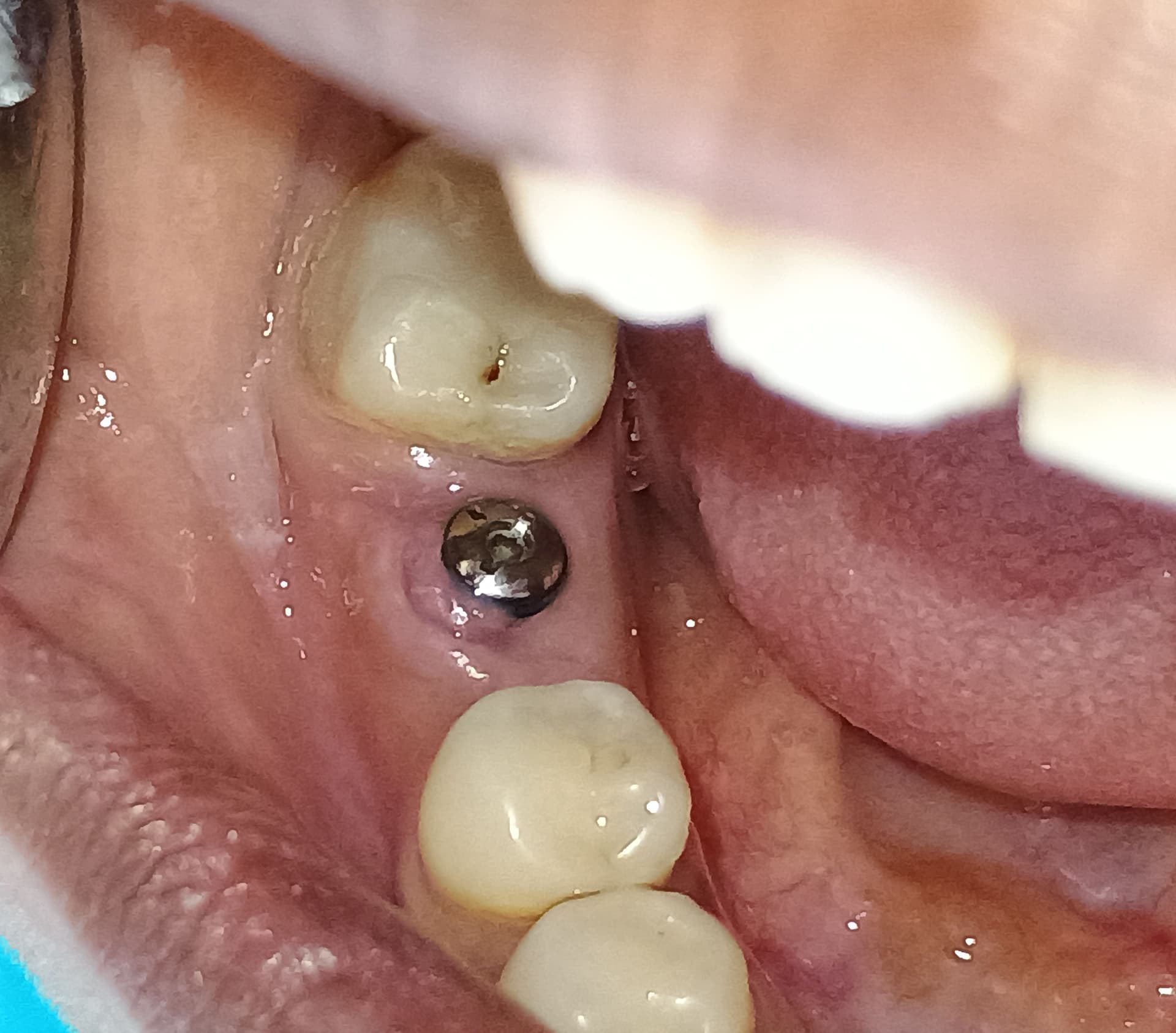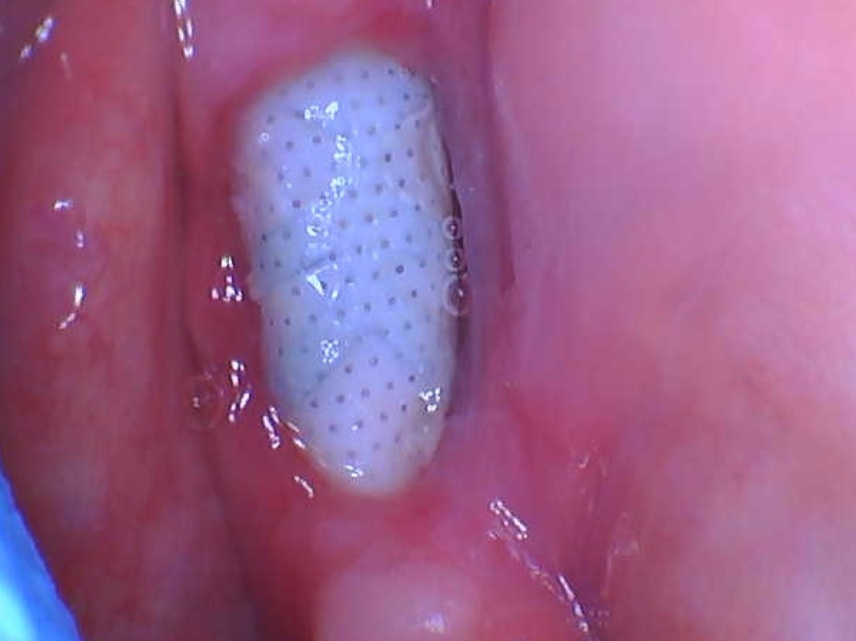Quality of Bone Density: Should This Be Used to Determine the Implant Thread Design?
Dr. L. asks:
Do we use the quality of the bone density to determine which implant fixture thread design to select for sites with different bone density? Are there particular thread or flute designs that work better in Type I bone [most dense] generally present in the mandibular anterior area? Are there particular thread or flute designs that work better in Type IV bone [least dense] usually present in the posterior maxilla? Can you use one kind of implant thread design for all kinds of bone densities?
12 Comments on Quality of Bone Density: Should This Be Used to Determine the Implant Thread Design?
New comments are currently closed for this post.
Dr. No OMS
9/27/2011
A group of really good questions! IMHO, the number of threads per inch (or flutes) and their design is especially important in the D4 scenario (most everything works well in D1-D2 bone.) In addition, thread pitch becomes significantly more important the narrower the implant. From a mechanics standpoint, wood screws have coarse threads while metal screws have finer threads. The hybrid sheet metal screw also has coarser threads which may be more like we see in the posterior maxilla with the dense, thin cortex. It seems that this design principal should have some implications for us in implant placement.
-
What may be more important than thread pitch is implant diameter and length, however. For a given bone density, it is hard to dispute that the longer and wider the implant, the better the retention and stability. The thread (or flute) pitch just enhances or detracts from that retention depending on the bone type.
-
There are a lot of smart people here on this forum - bet you get some really good answers!
Dr. No
John Manuel DDS
9/27/2011
Dr. L., Of particular concern to the operator, if using threaded implants, would be the size and tapping just prior to seating the implant. Some implants are somewhat "self-tapping", requiring a less accurately and less widened insertion space which allows the implant to compress the bone a bit upon insertion. Of course, a press-fit implant would be in this concern group also.
If the bone is too dense and hard to allow full seating of a self-tapping, or press-fit implant, excess torque or pressure might be used to attempt full seating. This could create bone pressure beyond the ideal for either type of implant.
Some implants are designed to sit almost passive in the prep site and these designs would be less affected by the site's bone density.
Most manufacturers have made allowances for this site density variation in their equipment and techniques. I am certain any would welcome your inquiry.
John
John Manuel DDS
9/27/2011
Dr. L.,
I forgot to mention that most feel less dense bone needs more bone/implant contact area.
Some manufacturers use a "fin", or "plateau" design, or threads with wide landings to increase the surface contact area of a shorter implant.
Longer implants do not necessarily give better performance - design is a major factor. Long cylindrical implants have stress concentrations at the end corners and dead spots on the pivot centers and apex in many cases. So, lengthening a cylinder basically just increases the "dead" contact area.
Ball shaped, or pear shaped implants transfer the force down the back side of the force, across the bottom and back up the loaded side, leaving no dead spots and no concentrated force hot spots.
We have to be careful just comparing a long or short implant since there are so many design variations.
And, as has been aforementioned, there are a lot of very smart ppl working on these problems.
John
Dr. No OMS
9/27/2011
Good comments John. I was too pressed for time earlier to go into more of the facets as you have. Definitely agree that overall implant shape as well as thread (or plateau/flute) depth are also important factors. Nothing is ever as simple as it appears on the surface. The screw analogy above, for example, mostly considers engineering principles in a design to maximize pull-out resistance. As we know, there are many other forces acting upon an implant in function the least of which may be pull-out. Since John is very much a Bicon fan, I'm sure that he will be happy when I say that I feel that it's design makes it one of the better soft bone performers. That is just a personal opinion based upon more than occasional use of that product for twenty years. To date, I have not seen scientific data to make any one system a clear cut winner in such bone.
-
Lastly, I am not advocating the use of any one system to be placed universally anywhere in the mouth. But, if that were the goal, I would primarily want a system that performs well in soft bone. Most systems will work well and can be utilized in D1-2 bone with taps, larger finish drills or etc. Also, we have to remember that we seldom place any implant in just one type bone. Different portions of the implant will exist and must sustain functional loads when secured by several different densities. A few of the older and many of the newer implant designs are attempting to address that varying density aspect.
-
Dr. No
Baker vinci
9/27/2011
Sorry guys , wish I could help you here . I am not an engineer. I am still into the longest, widest implant you can place. I feel like if those variables are maintained it probably doesn't matter , but it does. Every little bit of help, I will except. Bvinci
Robert J. Miller
9/28/2011
You are really asking the wrong question here. For decades, we have assumed that thread design alone was the arbiter of implant stability. The real question is what design gives us added surface area AND reduces early microfracture of bone. In last months JOMI (Paulo Trisi, et al), the authors showed that high torque implants demonstrated a significant loss of initial stability at one week. This is caused by high contact stress with bone leading to lateral microfractures and an exaggerated remodeling (catabolic) phase of bone. Using the same implant, but slightly enlarging the osteotomy to reduce insertion torque, they dramatically reduce microfracture. And, even though there was LESS implant-to-bone contact, the low torque group healed faster and with virtually no bone microfracture. What consequences does this have? In the article by Frietas, et al 2011, Oral Clin Res, they showed that with a modified cutting thread which reduces bone microfracture, they can substantially increase initial stability even when torque values are less than 50 Ncm. This design is embodied by a design from the company Intra-Lock International called the Blossom thread. This is a symmetrical helical tap built into the thread which allows bone to be cut efficicently rather than shearing and microfracturing it. By reducing insertion torque and compression to physiologic limits, this design significantly reduces the remodeling phase of bone, so we do not see the initial drop in stability at 1-3 weeks that we see in traditional threaded implant designs. These results are independent of the type of bone they are placed into. We are finally understanding the biologic paradigm in implant design, some of which is counter to principles we have held so close for decades.
RJM
Dr. No OMS
9/28/2011
Dr. Miller:
-
Good comments! But please consider that reducing microfracture and increasing initial stability is still only part of the question - what about long term stability? Any threaded implant can become a high torque implant if the bone is dense enough. Also, final drilling sizes are seemingly devised to accommodate "average" densities and often need to be modified when unusually soft or dense bone is encountered. While an integrated thread tap is handy, most systems offer separate pre-insertion taps that can be utilized when necessary to control that issue with the disadvantage of adding an extra step. Would you agree that a deeper thread design increases the surface area and enhances long term stability? Is a deeper thread design more important in softer bone? I suppose that we are all looking for the ideal implant that increases stability at all stages. Can any one implant design provide the best option in all the different bone types encountered in the maxilla and mandible?
-
Thanks!
-
Dr. No
Robert J. Miller
9/28/2011
Long term stability is still related to surface area. Resistance to load without deleterious breakdown or remodeling is directly proportional to surface area and bone-to-implant contact. While your statement that any threaded implant will have higher torque in dense bone is basically true; this is because most threaded designs are nominally "self-tapping", and the rest of the implant body past the apical vents is compressive. This is why most implant drill kits are supplied with taps for dense bone. However, the new Blossom design is a self contained symmetrical helical tap spaced up the entire body. Therefore, regardless of the bone density it will cut into the osteotomy extremely efficiently. We were a part of a three year beta test group where we evaluated torque values in varying densities of bone. There was virtually no difference in cutting efficiency regardless of site. This would be significant advantage in soft bone, as light trebecular bone must remain intact to ensure initial stability. The shearing/compressive designs did rather poorly in our study. My personal preference is a more agressive thread profile, especially in the apical half, with an integrated tap to ensure vital bone is in contact with the implant body. The engineers at Intra-Lock International got this one right.
RJM
Dr. No OMS
9/28/2011
Dr. Miller:
An outstanding answer from someone who has obviously gone to school and been around the block a few times (and I mean that as a complement.) I see some real advantage to the integrated helical tap that extends up the entire body from a cutting standpoint. I would worry a little about the chip clearance being as effective as the flutes in the dedicated tap. That said, it has to be better than not having any clearance at all as with the traditional self tapping implants. It is also nice not to have to worry about dull cutting edges on the reusable and separate taps. I am additionally intrigued about your comments regarding tapping less dense trabecular bone. Conventionally, many have considered compression to be the method of choice to increase initial stability. It does make sense that this would cause a catabolic response in successive weeks.
-
As you, I also like the more aggressive pitch and deeper thread designs especially in less dense trabecular bone. That increased surface area as it relates to long term stability is what I could not glean from your first post. Curiosity also begs me to ask how much better the Intra-Lock actually did in your studies versus other implant designs? Thank you for sharing the information and I will definitely want to keep an eye on this system!
-
Dr. No
Dr.ahmed
9/30/2011
implant thread geometry is not an critical factor when mandible is the site of interest,but many researches concluded that when maxilla is the site,so square threads,reverse buttress and trapizoidal shapes are the first choice and preferable than other design such: triangular and buttress. thnx
Nazar
10/12/2011
As it was mentioned before, the biomechanics of Bicon is more effective comparably to long cylindrical implants due to absence of “dead†contact area. This rule can only be implied while under horizontal force. Vertical force distributes over the entire area of long cylindrical implants uniformly. This is one of the criteria for success of the Straumann implants.
Dr Rahul Kothari
7/12/2012
Square shape thread for soft bone types. the design places compressive loads with minimal shear on the bone. bone is strongest to bear compression and weakest at shear.
Using sqaure design for hard bone types may cause microfracture of the bone if bone tap is not used. a self tapping square shape should not be recommended in hard bone types. A V thread or reverse buttress should be sufficient.














